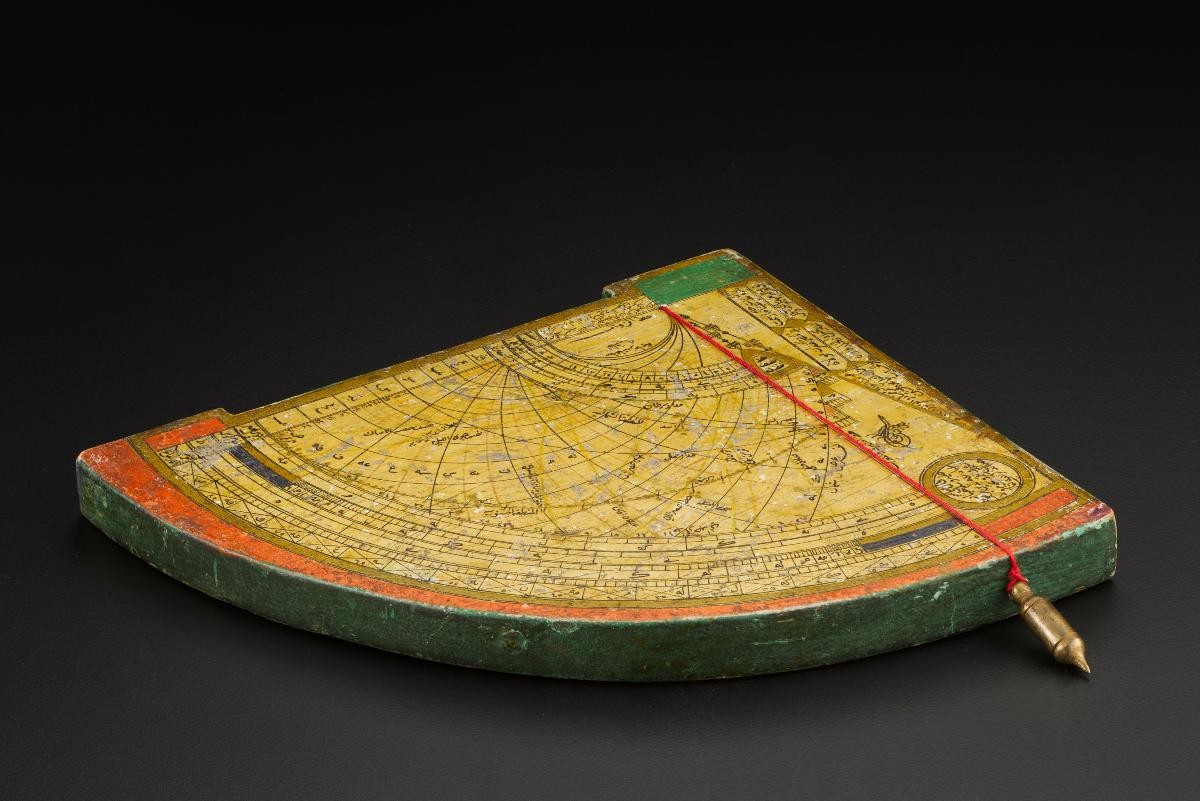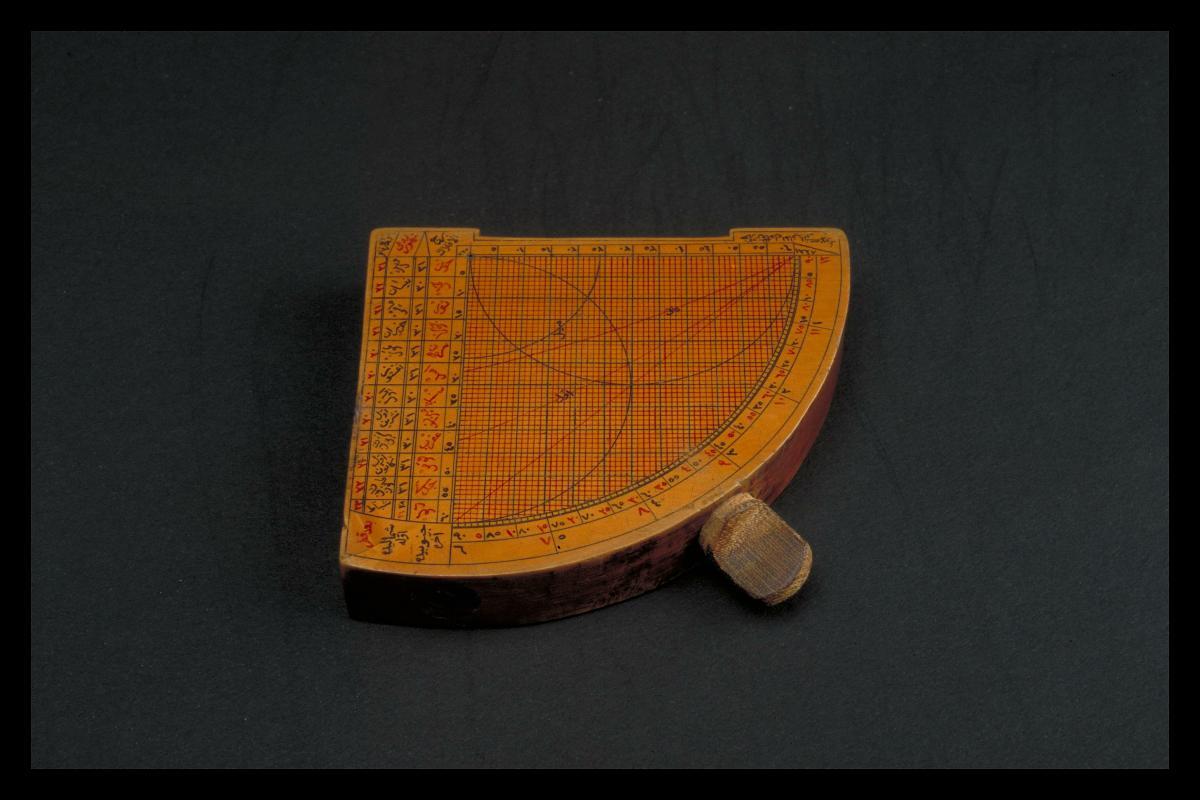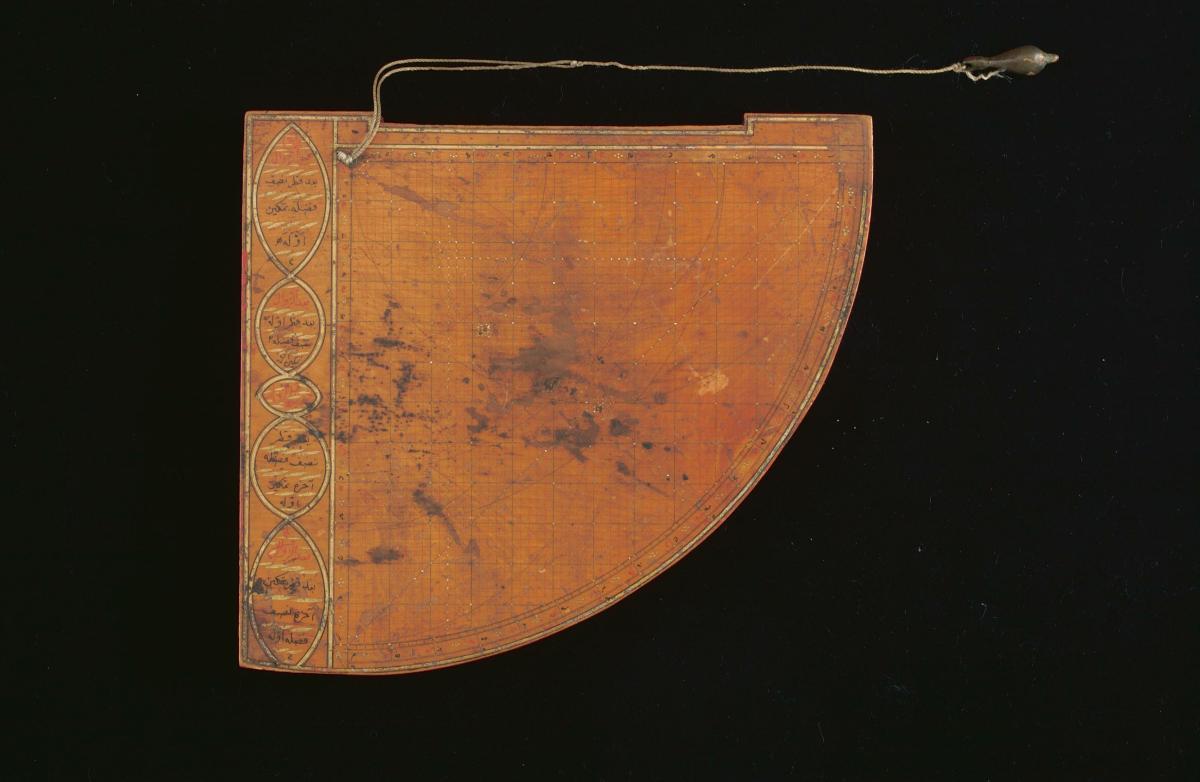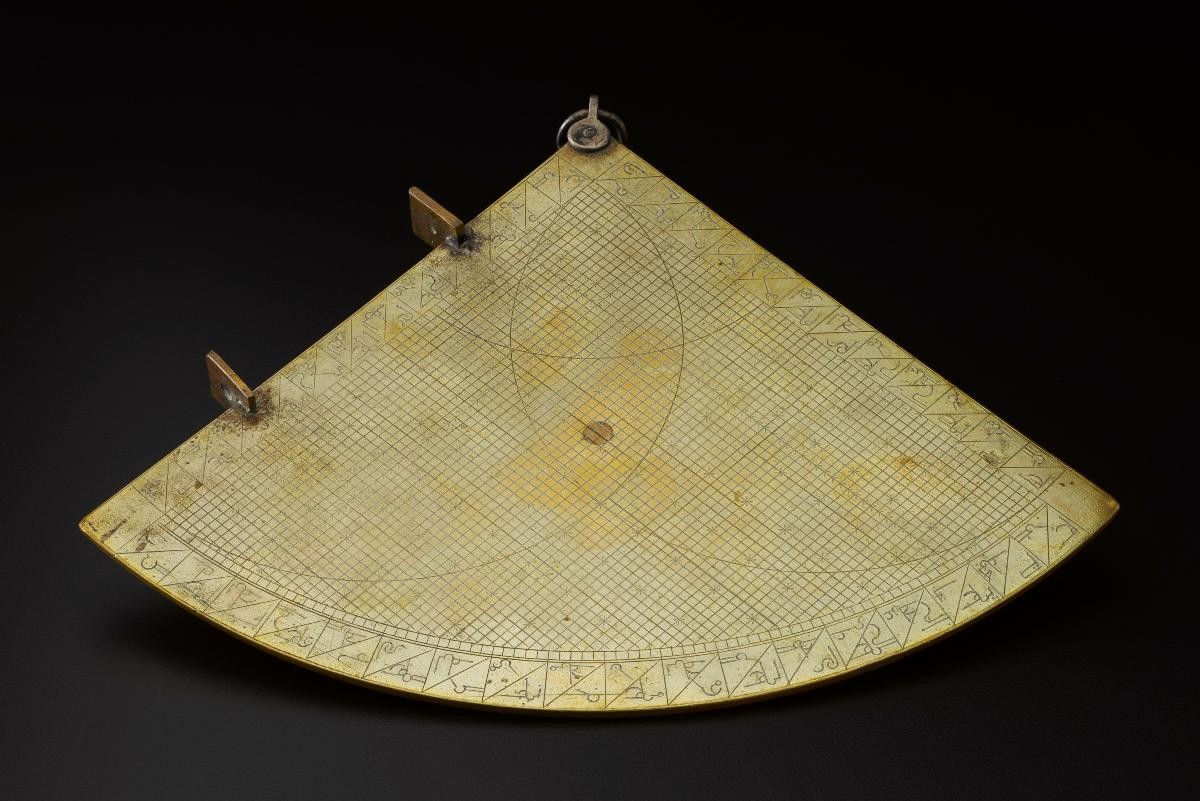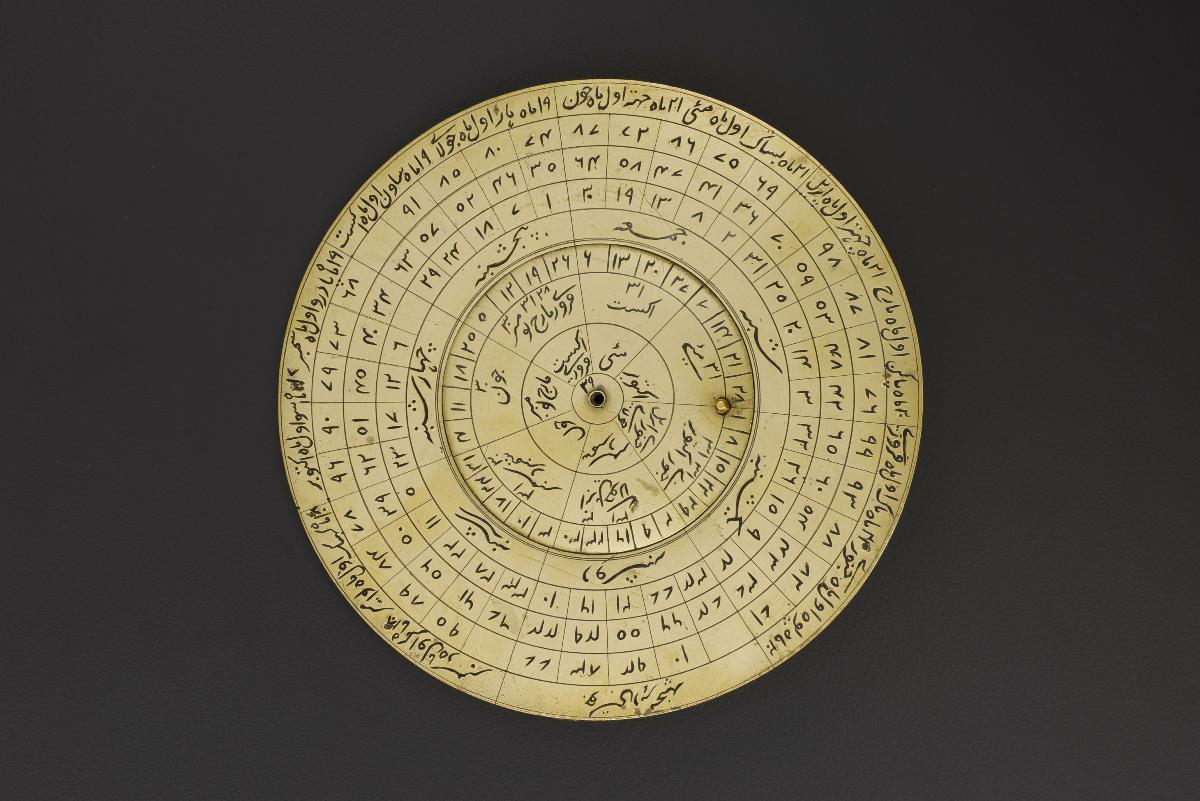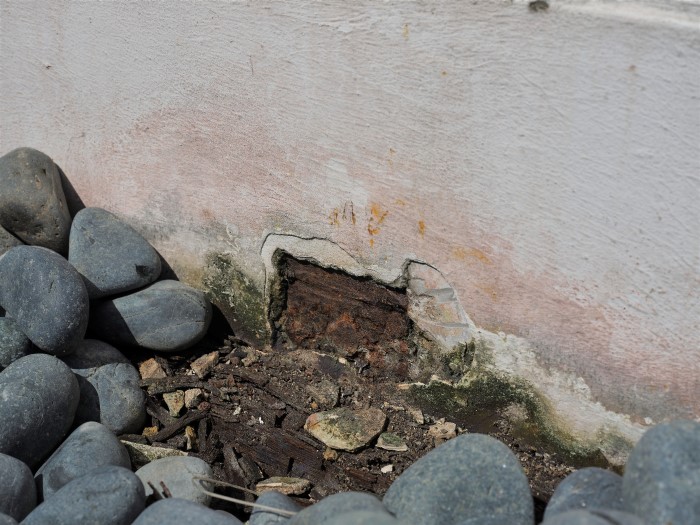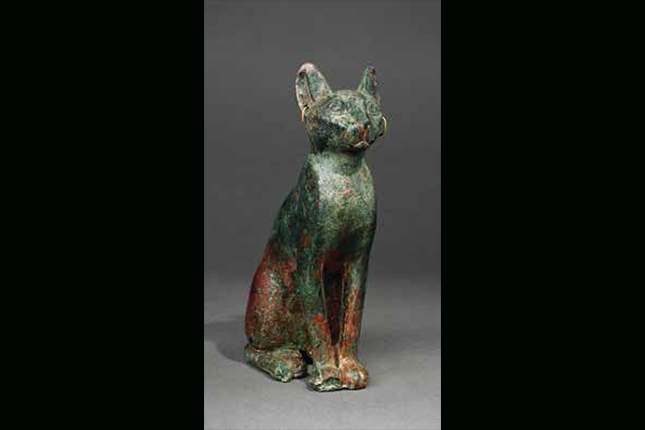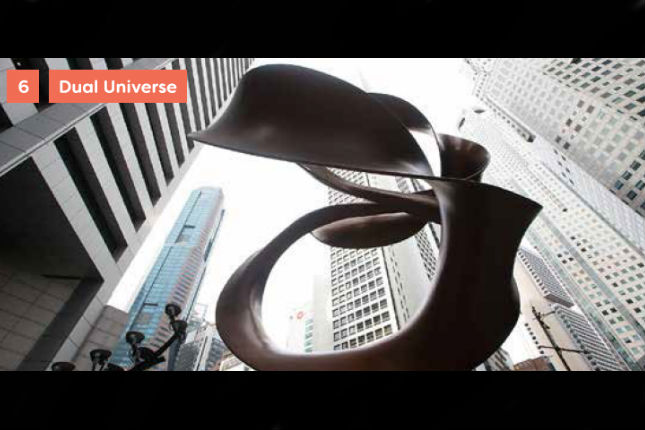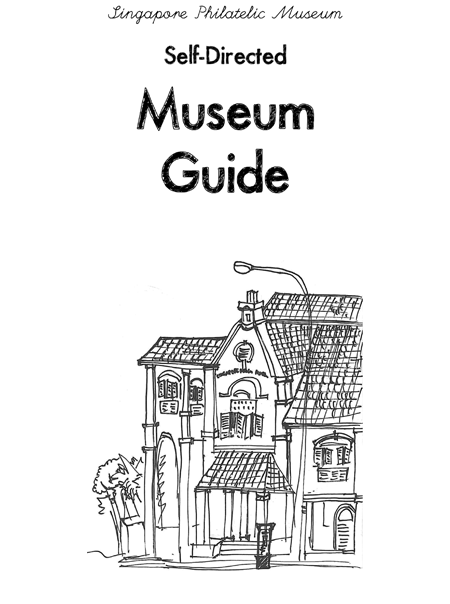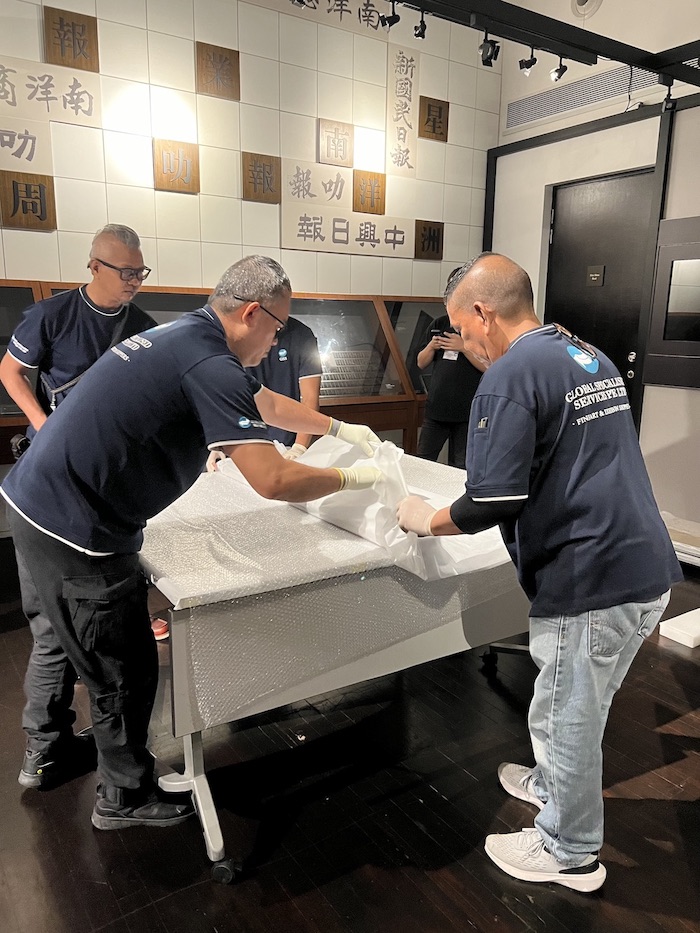Object size: 14.5 x 17.0 x 1.6 cm
Astrolabes and quadrants belong to the same family as they fulfil the same mathematical functions such as calculating heights/altitudes of landmarks, buildings or celestial bodies such as stars. Quadrants are generally considered as more compact editions of astrolabes, favoured for being smaller, more lightweight and hence more portable. These calculations can be applied to a variety of purposes including astronomy, astrology, architecture, navigation, topography, cartography, telling time and deriving calendars. The main applications of quadrants and astrolabes in the Islamic world that serve the umma or community of believers would be the calculation of prayer times, the Hijri calendar and determining the qibla, the prayer direction towards Mecca. One side of the quadrant can be read as a stereographic projection of the night sky tied to specific coordinates, in this case, Tanta, northern Egypt. Several inscriptions of Quranic verses as well as prayers and supplications can be found on both sides. Other markings indicate that this quadrant can be used to calculate prayer timings according to the different Islamic legal schools, particularly Shafi'i and Hanafi.




